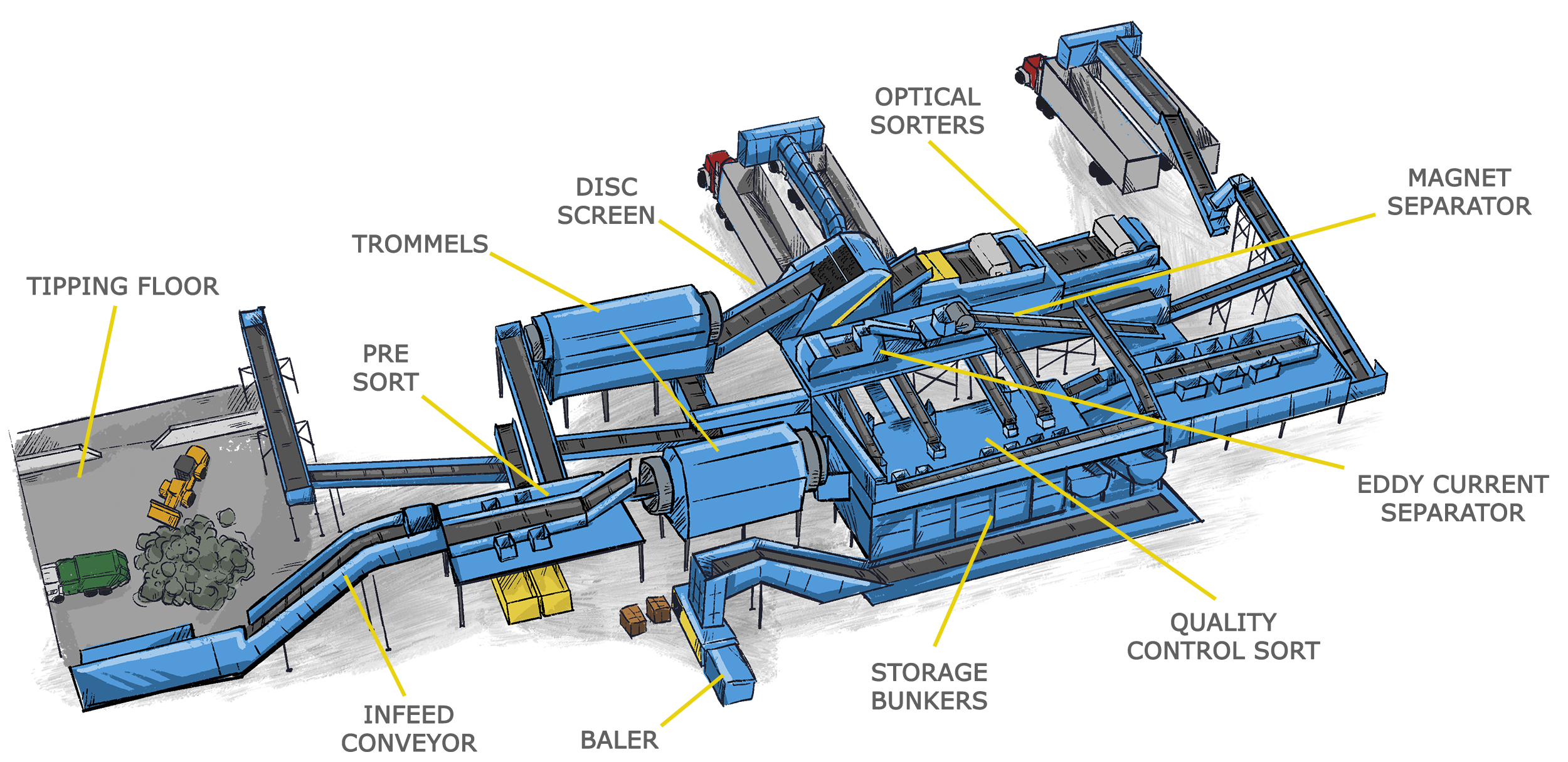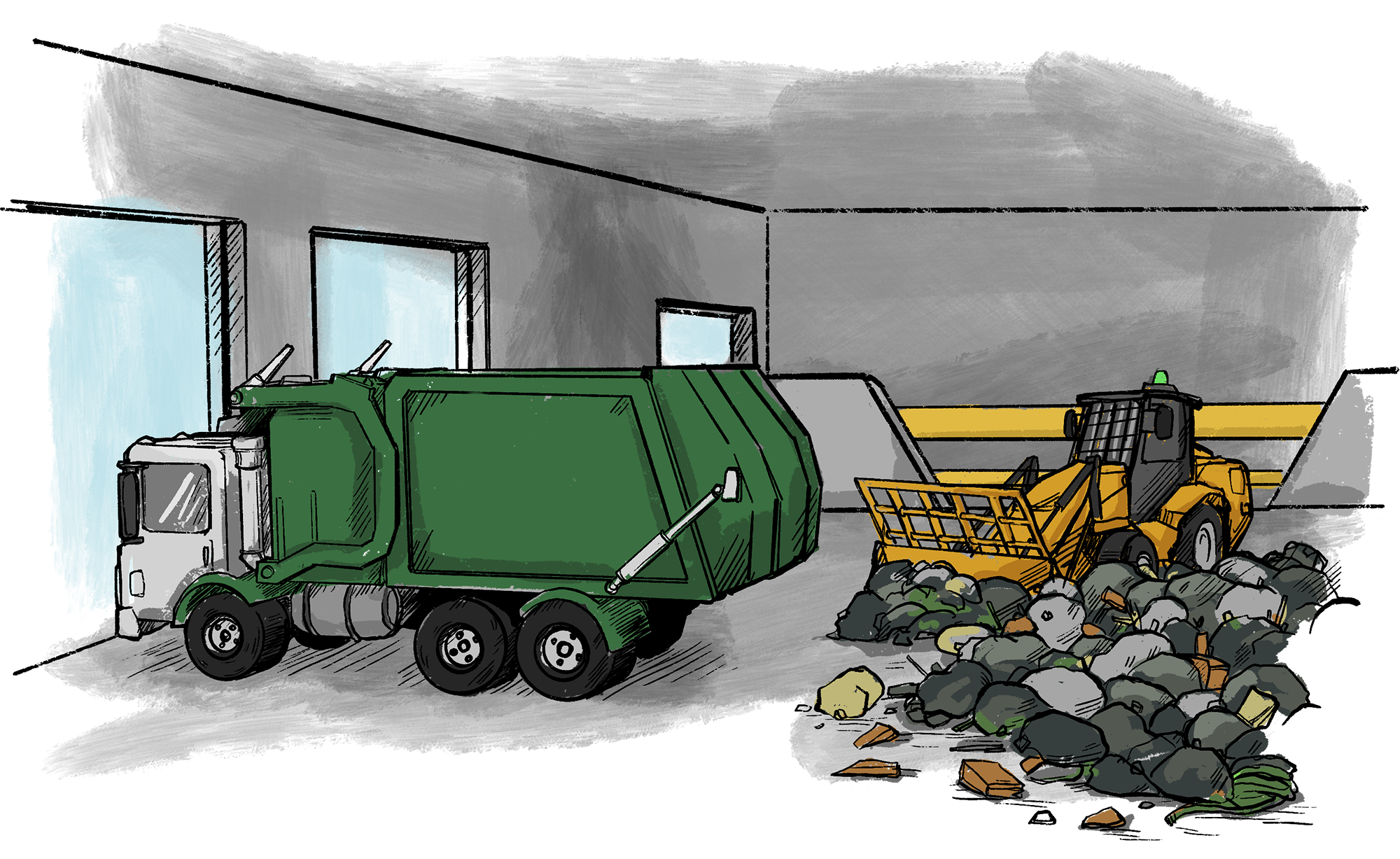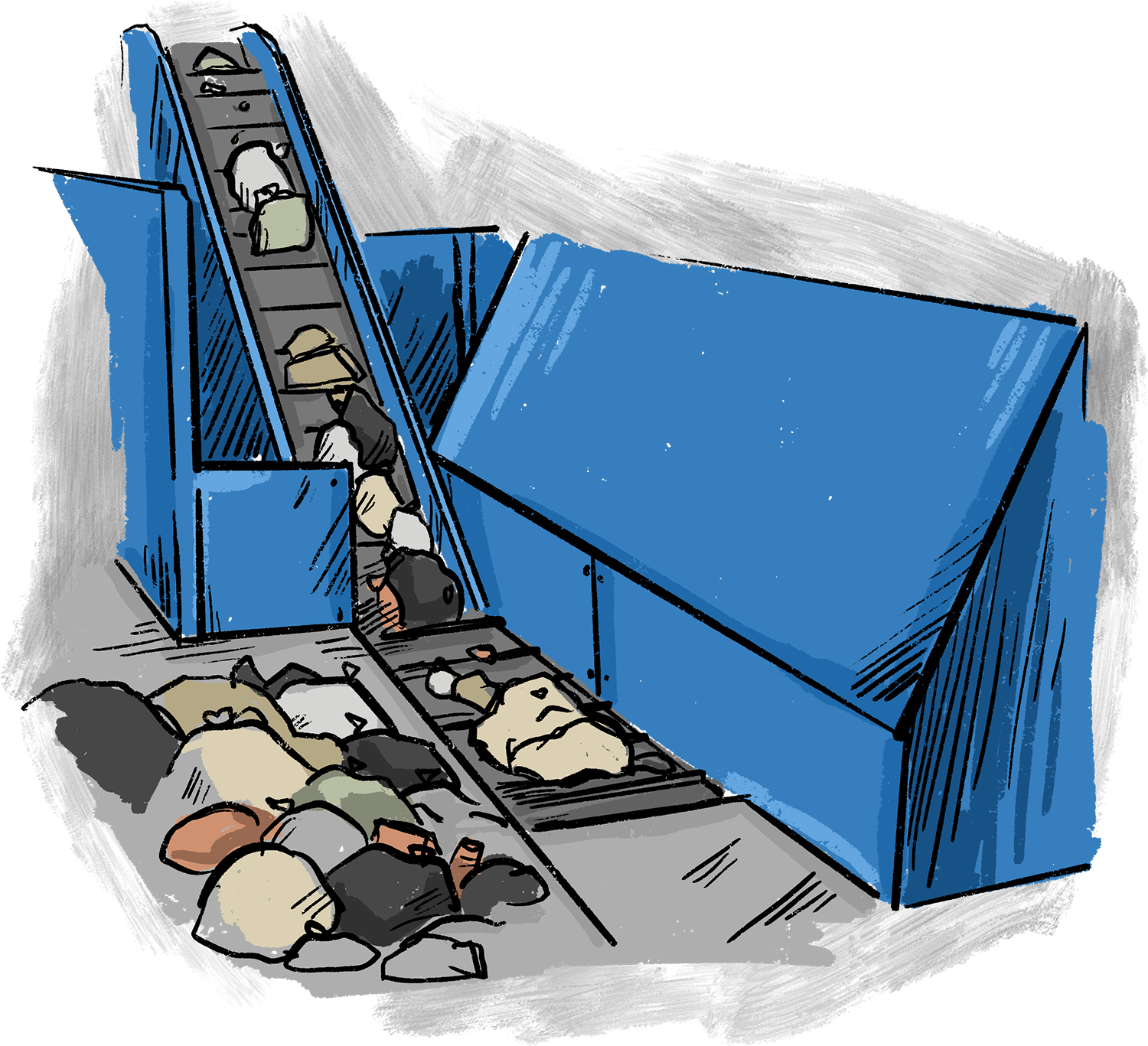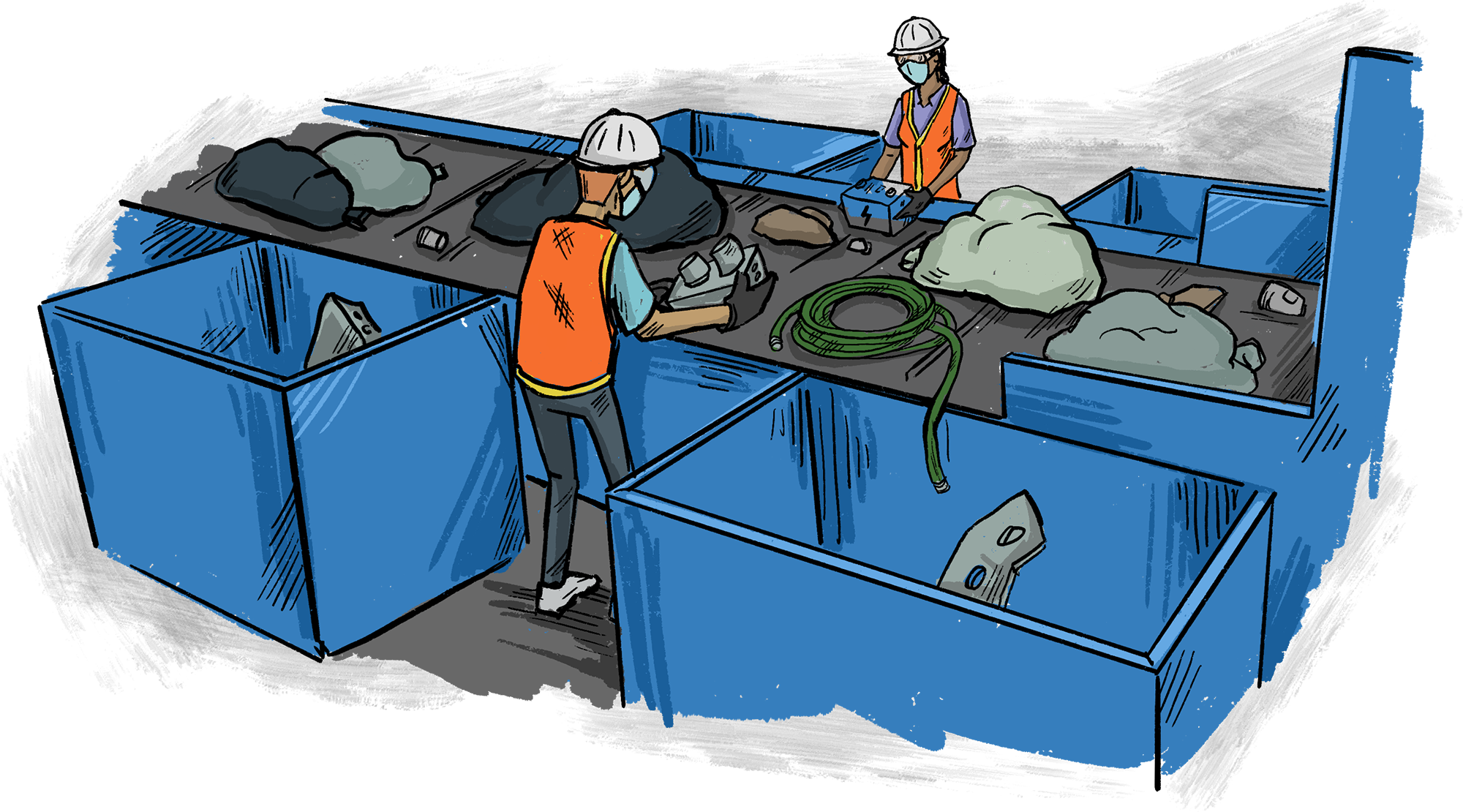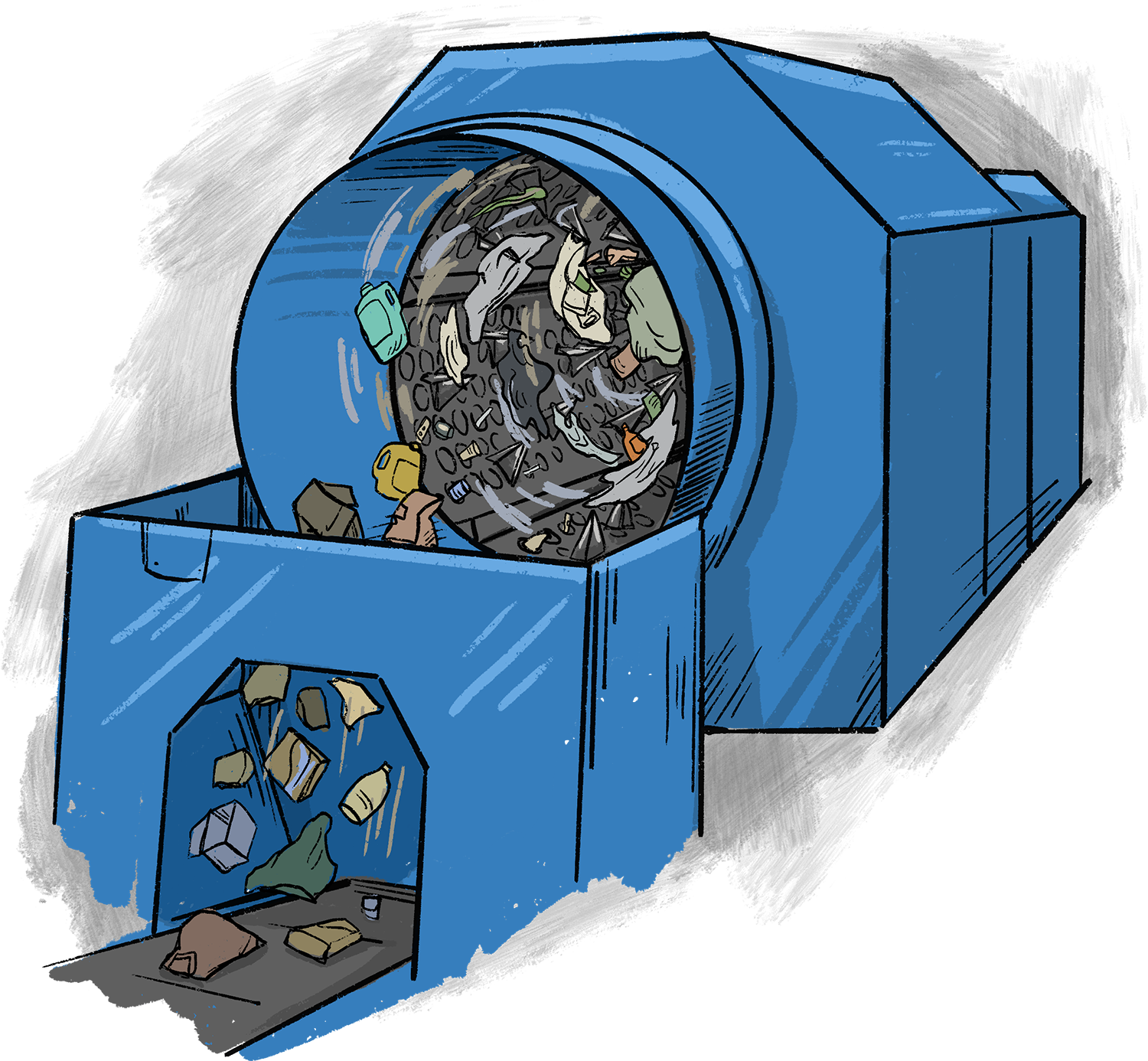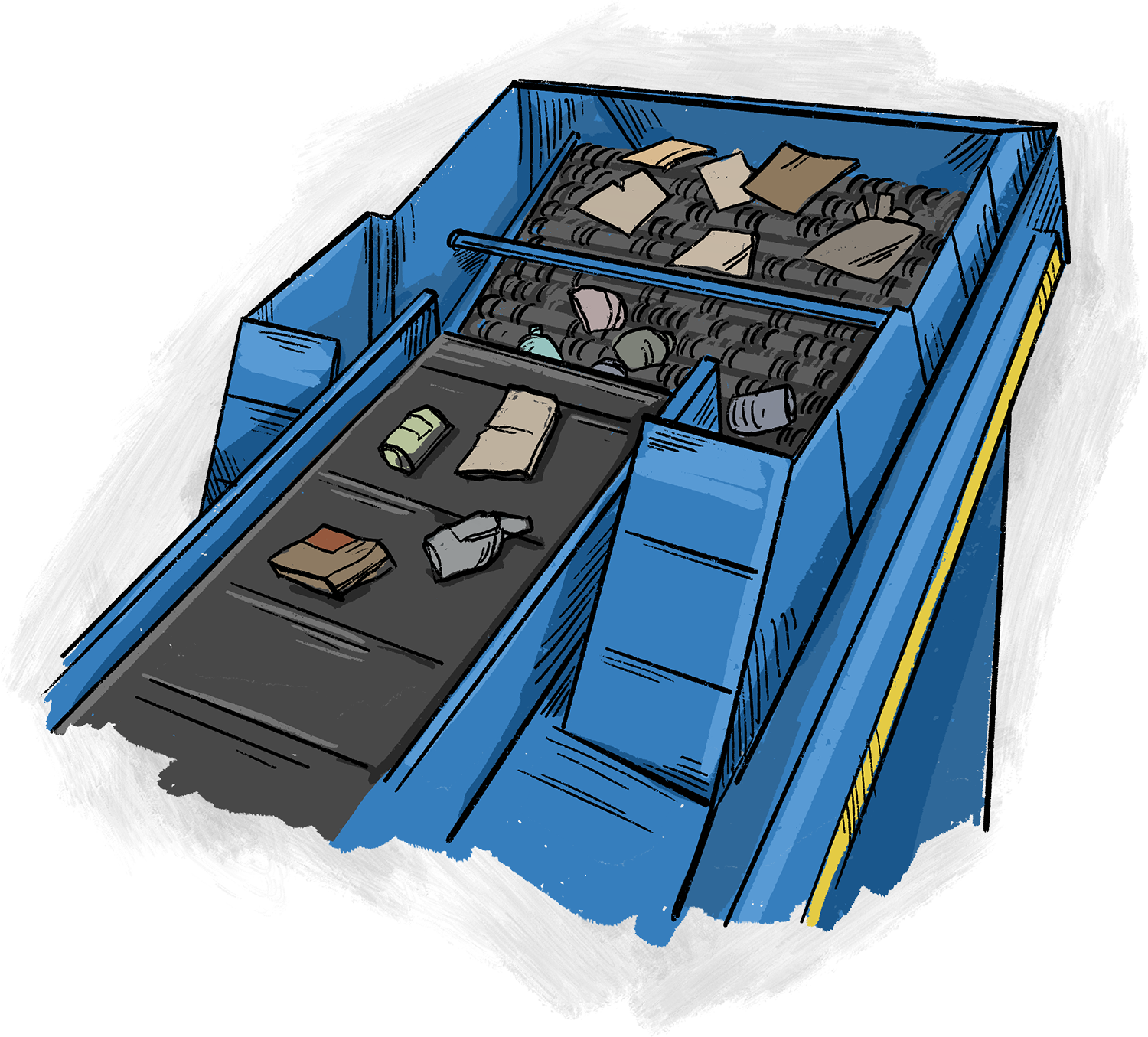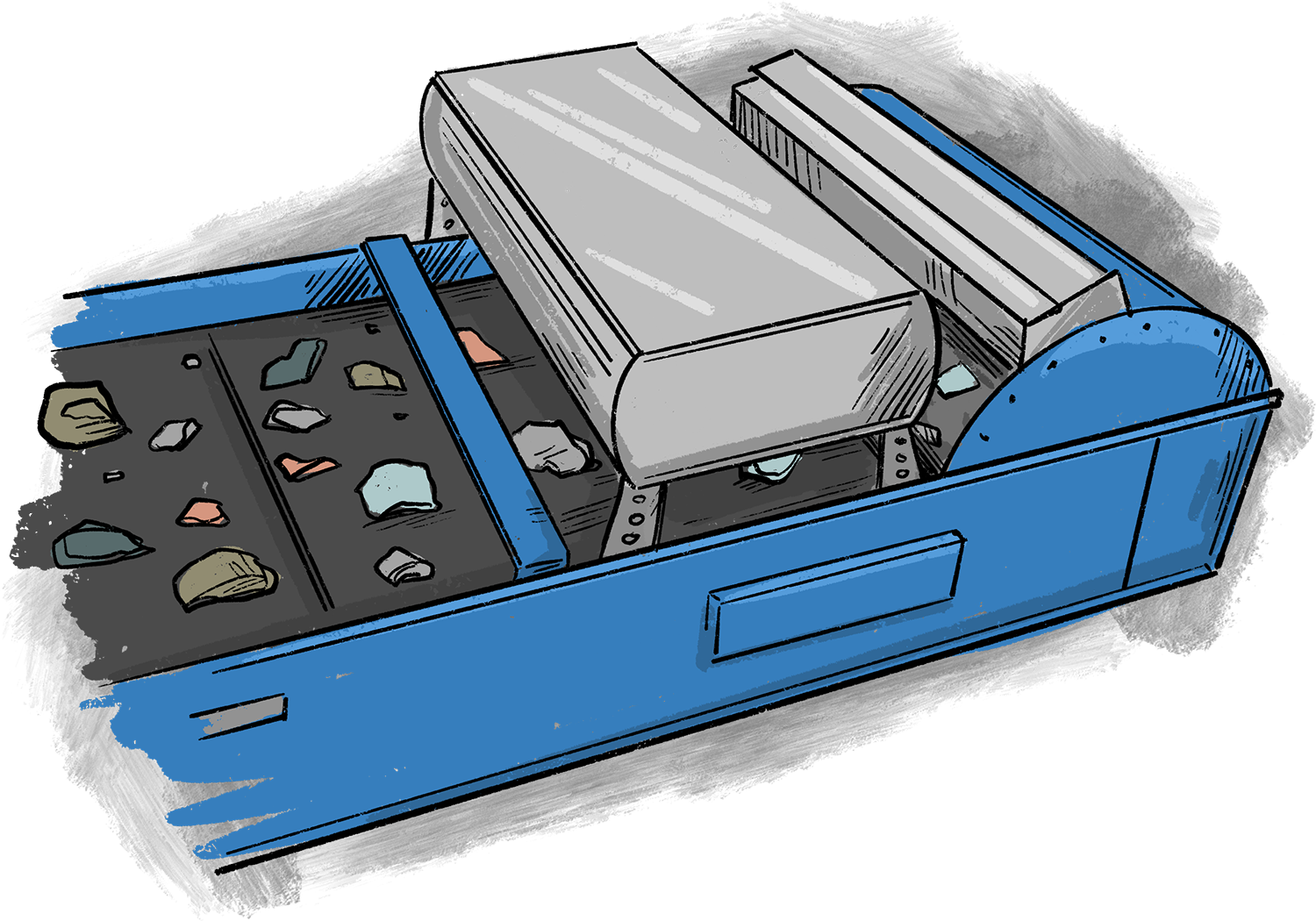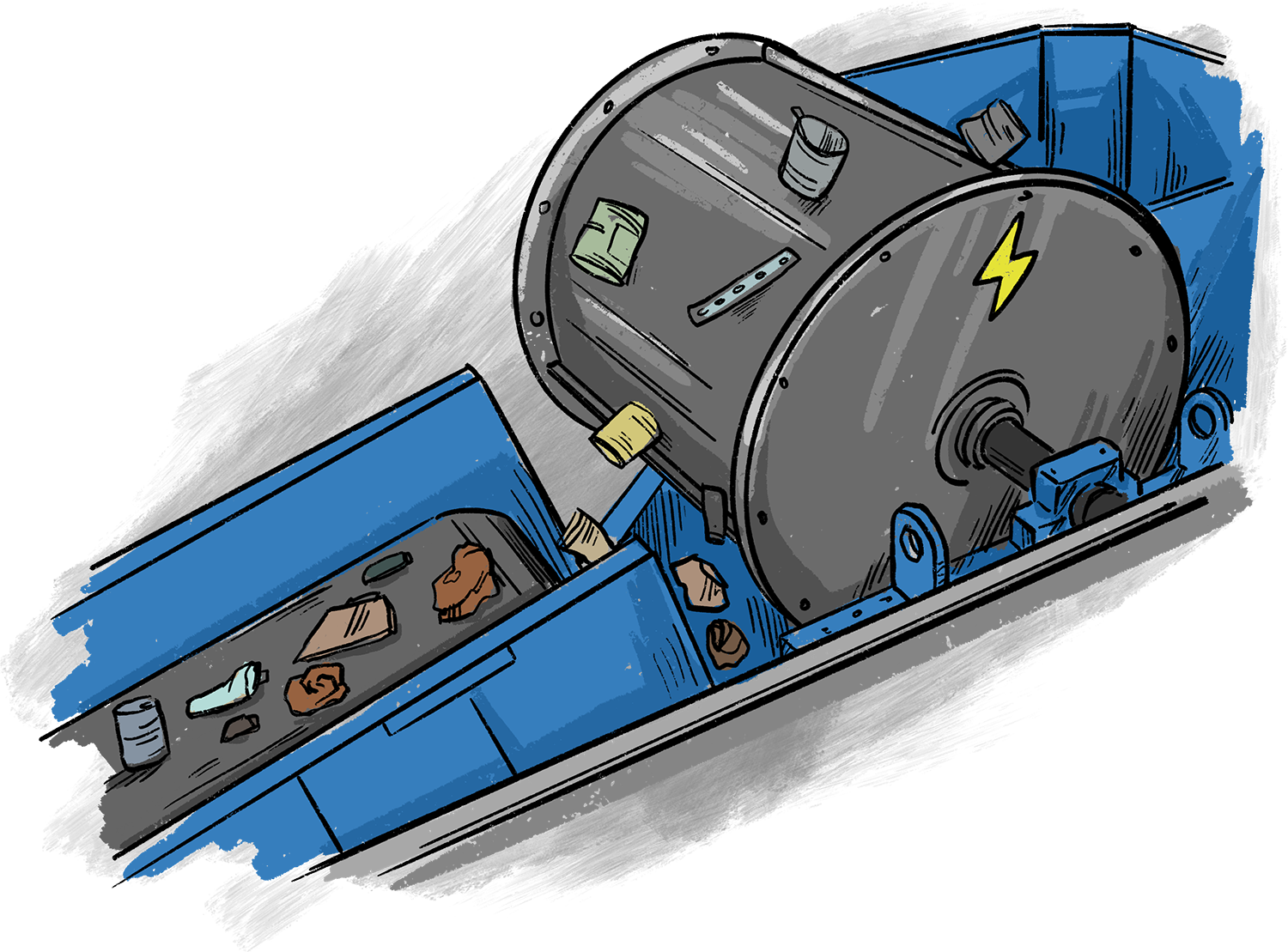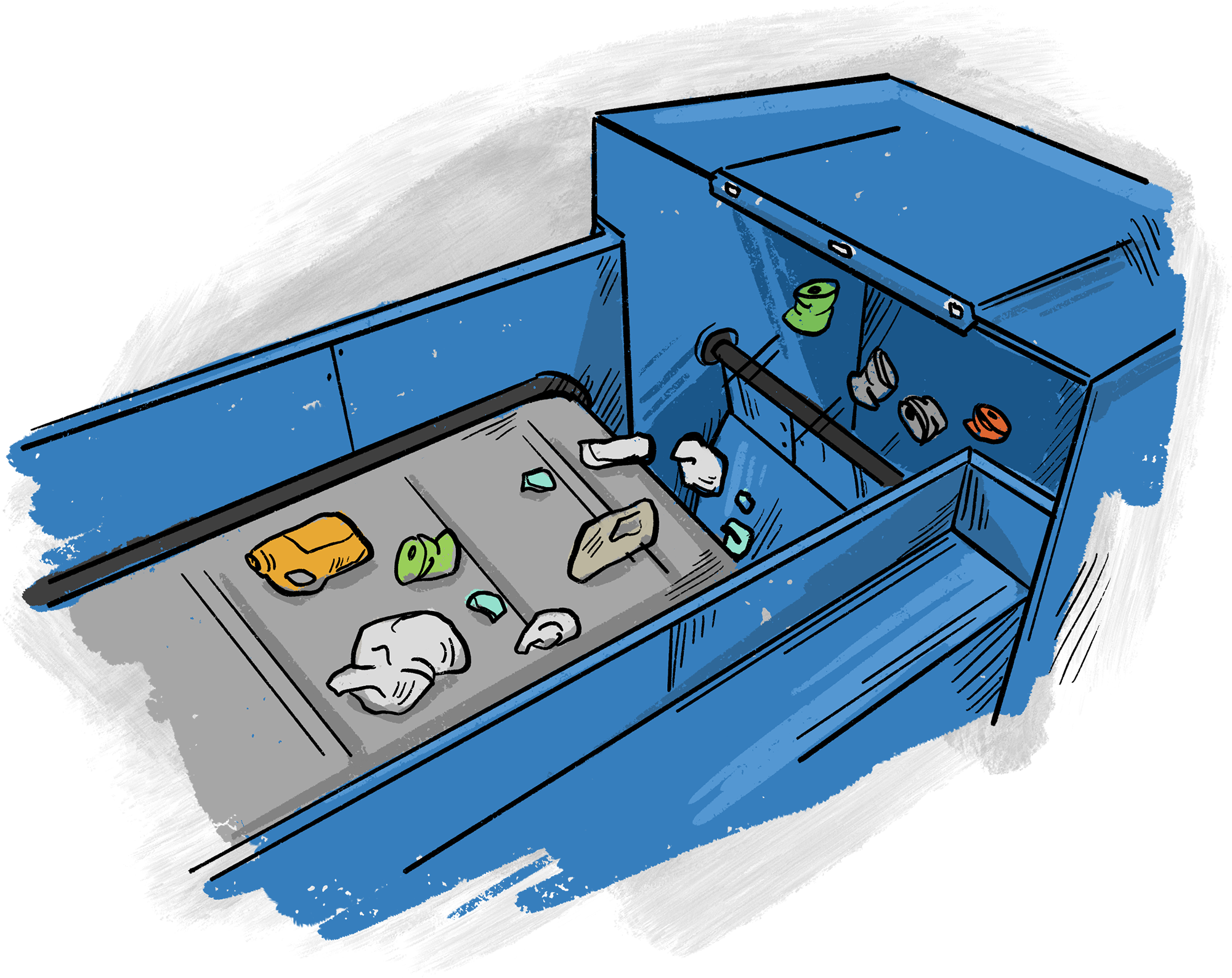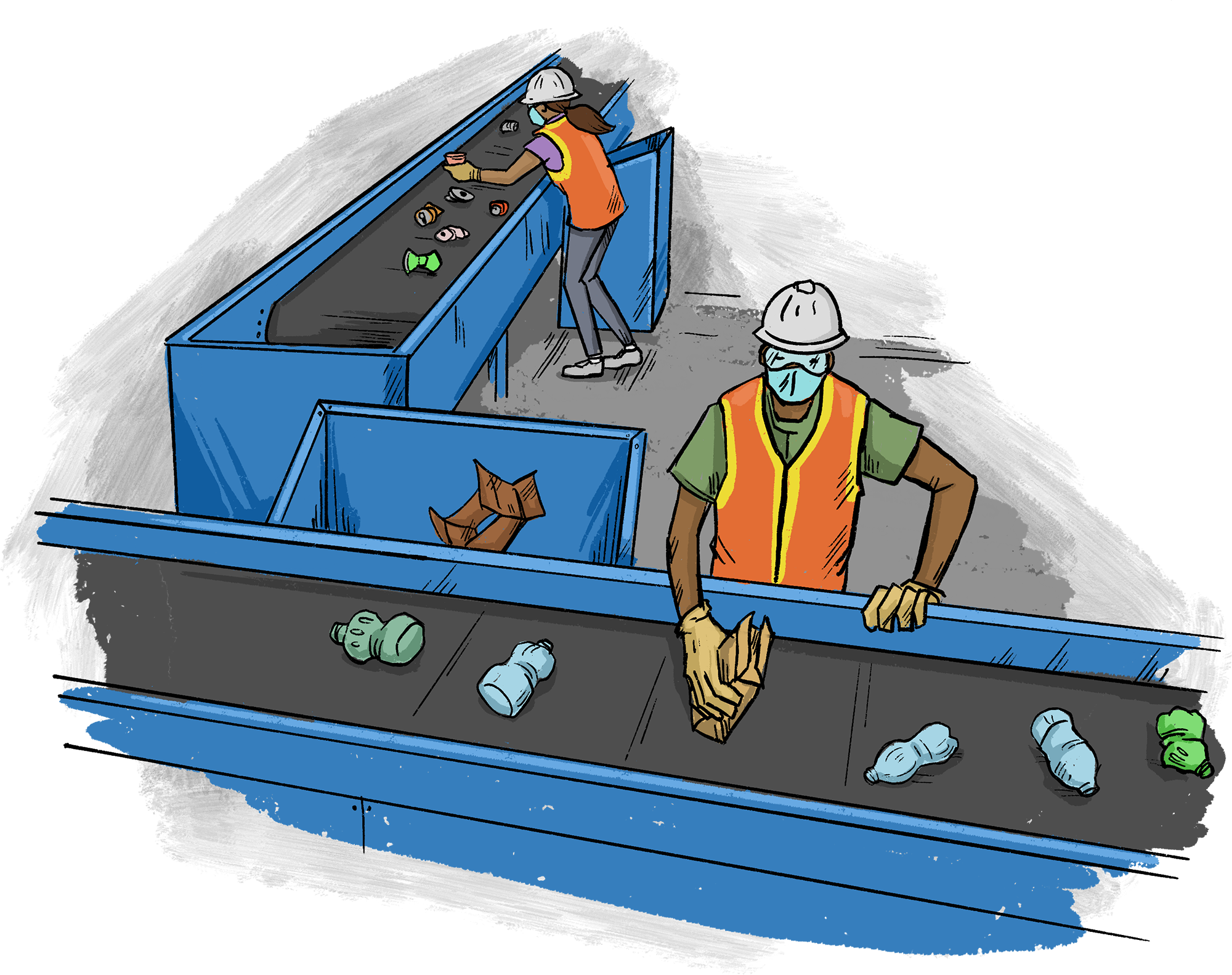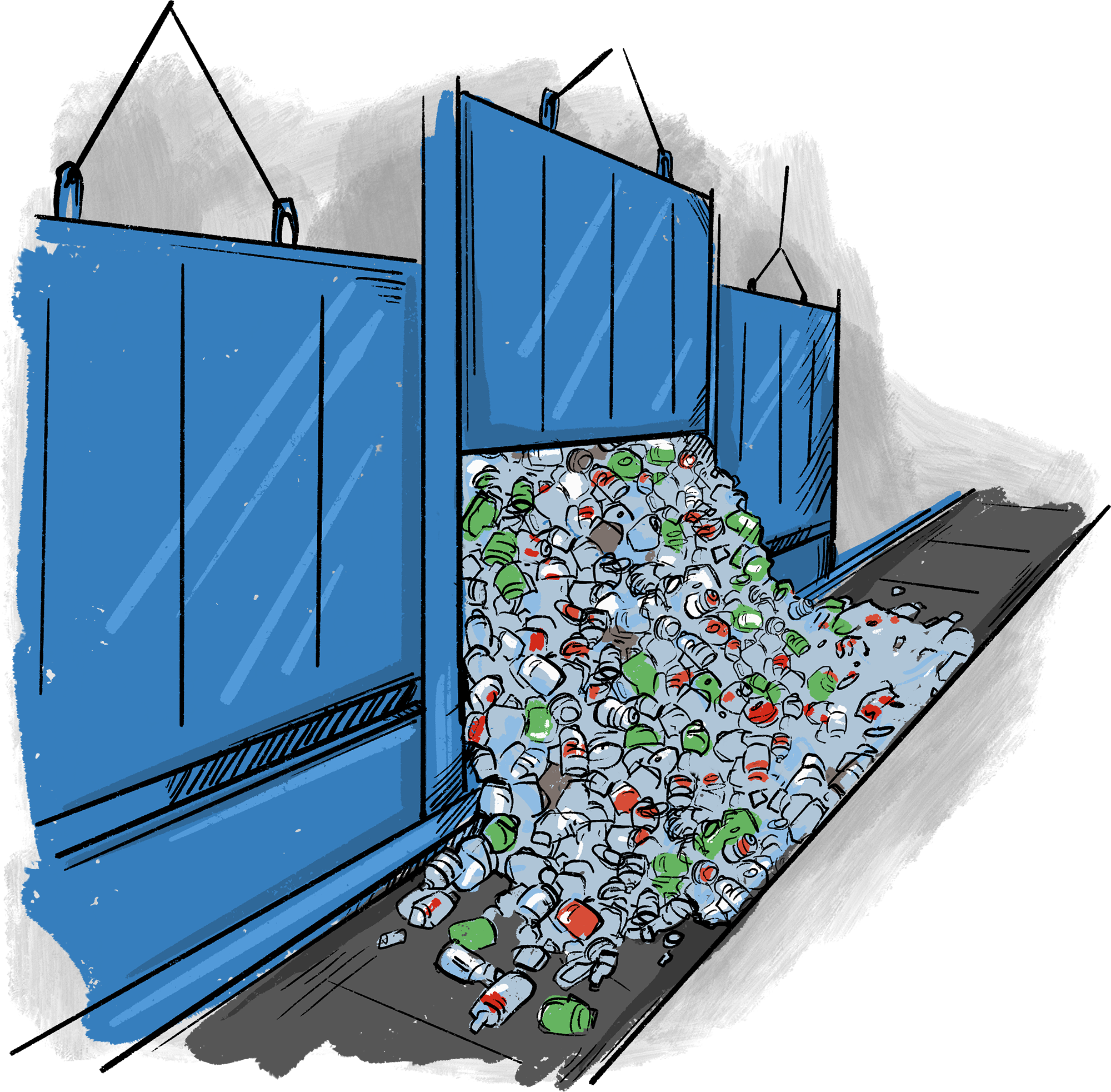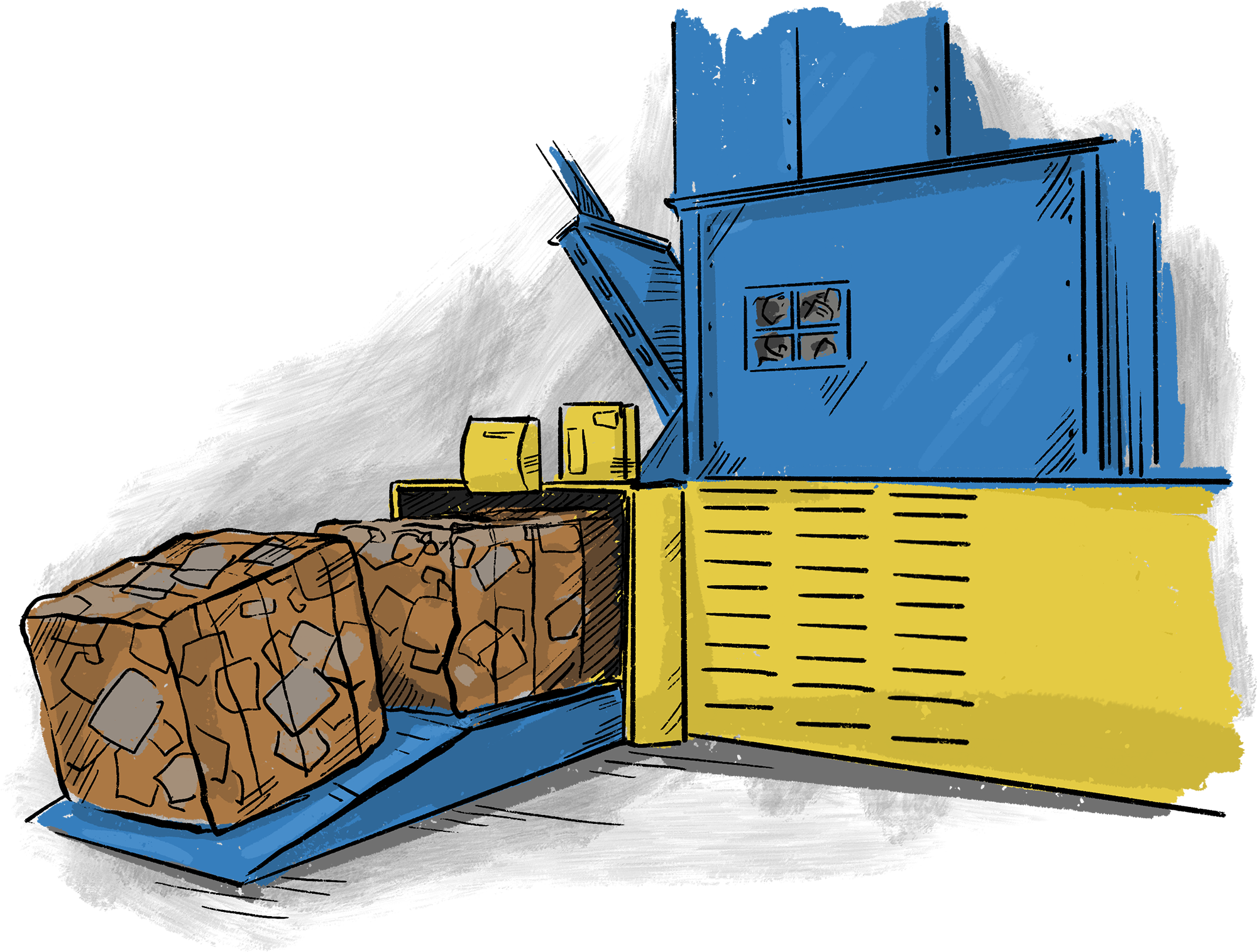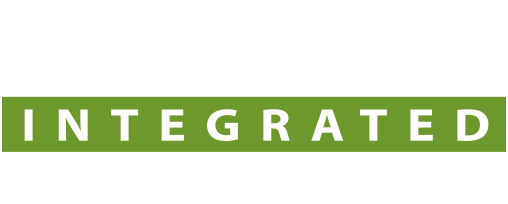OUR LOCATION
Operations began at the Davis Material Recovery and Transfer Facility located in Layton, Utah, in June 2020. The new facility recovers valuable resources from residential recyclables generated in Davis and Morgan Counties.
The facility is designed to process co-mingled and single stream recyclables, for recovery of valuable materials. Waste is processed in a highly mechanized system which recovers recyclable materials for sale to market. Recyclables currently being recovered include cardboard, mixed paper, plastics #1 and #2, aluminum cans, and steel cans. Non-recyclable plastics and some paper are combined to create an engineered fuel which can be used by industrial sources to offset the use of coal. Waste from the facility is then transferred to a regional landfill extending the life of the Davis Landfill, located in Layton, for many years.
Download our handy Recycling Info Sheet to see what you can recycle every day at our facility!
Operations began at the Davis Material Recovery and Transfer Facility located in Layton, Utah, in June 2020. The new facility recovers valuable resources from residential recyclables generated in Davis and Morgan Counties.
The facility is designed to process co-mingled and single stream recyclables, for recovery of valuable materials. Waste is processed in a highly mechanized system which recovers recyclable materials for sale to market. Recyclables currently being recovered include cardboard, mixed paper, plastics #1 and #2, aluminum cans, and steel cans. Non-recyclable plastics and some paper are combined to create an engineered fuel which can be used by industrial sources to offset the use of coal. Waste from the facility is then transferred to a regional landfill extending the life of the Davis Landfill, located in Layton, for many years.
Download our handy Recycling Info Sheet to see what you can recycle every day at our facility!
1. TIPPING FLOOR
This is the first step of the recycling process at the Davis Material Recovery and Transfer Station.
Incoming recyclables are inspected on the tipping floor and large non recyclables items such as tires, Christmas lights, hoses, etc. are removed by the loader operator.
2. INFEED CONVEYOR
Recyclables are loaded by the loader or material handler onto the infeed conveyor which feeds the system at a uniform and metered rate.
3. PRE SORT
Sorters standing on each side of the Presort Conveyor will remove large clean cardboard from the feed stream and drop it through the first set of chutes into a bin for recycling. Bulky metals such as pots and pans, small appliances, propane cylinders, wheels, pipes, etc. that are too small for the loader to see yet should not be processed are also removed for recycling. Non-processible materials (hoses, wire, electronics, carpets, tires, textiles, etc.) are removed to prevent system jams and potential damage to downstream process equipment. These sorters also try to open bags, but bagged recyclables will likely not be recovered for recycling.
4. TROMMELS
The material passes through the Primary Trommel which is a rotary screen containing heavy duty screens with 9” holes. Sharp metal spikes are mounted within the trommel to rip open bags and liberate materials for efficient separation. The trommel screen removes the “overs” fraction consisting of materials larger than 9”.
The material passes through the Primary Trommel and is then conveyed to the Secondary Trommel, which also contains fixed spikes, to continue liberating material and then screens material with 2” holes.
5. DISC SCREEN
“Middling” from the secondary trommel consists of material smaller than 9” and larger than 2” and is conveyed to the disk screen where it is separated by shape (flat or round).
- Flat items like paper, small carboard, and plastic film are conveyed to an optical sorter where plastic film and paper can be recovered for recycling or use as an engineered fuel.
- Round items largely consisting primarily of containers are conveyed through a series of equipment. First through two optical sorters for removal of PET (plastic water bottles #1) and HDPE (milk jugs and detergent bottles #2). Second, a suspended magnet to remove ferrous metal (soup cans). Third, a non-ferrous eddy-current separator to remove aluminum cans.
6. OPTICAL SORTER
Optical sorters combine high-resolution Near Infrared (NIR), color, and metal sensors to accurately identify a wide variety of materials moving on a conveyor belt. Air blasts fire on selected materials as they drop off the end of the conveyor to pop it over a divider.
7. MAGNET SEPARATOR
Powerful permanent magnets are housed inside a rotating drum. As material passes near the drum, ferrous metals are attracted to the magnet and “stick” to the drum. As the drum rotates the ferrous metals are carried over and dropped in a separate chute.
8. EDDY CURRENT SEPARATOR
The eddy current separator uses a high speed rotating rare earth magnet to generate “electromagnetic eddy currents” in an alternating magnetic field. The resulting eddy currents selectively repel non-ferrous metals, physically tossing them over a divider into a separate chute.
9. QUALITY CONTROL SORT
Sorted recyclables are then conveyed past a quality control sorter who removes contamination prior to the storage bunkers in a “negative sort.”
10. STORAGE BUNKERS
Materials recovered for recycling; cardboard, paper, aluminum, steel cans, PET (plastic #1), HDPE (Plastic #2) are conveyed to and stored in bunkers prior to baling.
11. BALER
Recovered materials are then pressed into bales and tied for delivery to market.
MATERIAL RECOVERY AND TRANSFER FACILITY (MRF) FREQUENTLY ASKED QUESTIONS
FREQUENTLY ASKED QUESTIONS
Q: What is the landfill address?
A: The landfill is located at:
1997 East 3500 North
Layton, Utah 84040
This address does not work with navigation apps or devices. Please visit our contact page for a map and directions.
Q: What is the material recovery and transfer facility address?
A: The MRF is located at:
3404 North 650 East
Layton, Utah 84041
It can be accessed from Highway 193 or Fairfield Road.
Q: What is the Administrative Office Address?
A: The Administrative Offices are located at the landfill at:
1997 East 3500 North
Layton, Utah 84040
As is the case when navigating to the landfill, this address does not work with navigation apps or devices. Please visit our contact page for a map and directions.
Q: What are your hours of operation?
A: Landfill summer hours are:
7am-6pm, Monday through Saturday
Landfill winter hours are:
7am-5pm, Monday through Saturday
The MRF is not open to the general public
The Administrative Offices are open from 8:00 am to 5:00 pm Monday through Friday
Q: Why are summer and winter hours different?
A: Summer and winter hours are coincident with Daylight Saving Time. In the winter it gets dark earlier and there are fewer residential customers, therefore for safety reasons, we close at 5pm in the winter.
Q: I have a problem regarding my curbside garbage, recycling, or green waste can. Who can I call?
A: Wasatch is responsible for disposing of municipal solid waste within the District but each city contracts with a waste hauler for curbside garbage, recycling, and green waste recycling. Please contact your city or hauler for issues regarding your curbside service. You can find your city’s public works phone number on our board information page.
Q: What are the District boundaries?
A: Wasatch Integrated Waste Management District serves all of Morgan and Davis Counties, with the exception of Bountiful City who operates their own separate solid waste system.
Q: What ID or documents can I provide as proof of residency?
A: A driver’s license or other current government issued ID with address, utility bill (within the last six months) property tax notice (within the last year), a dated work order, building permit, invoice, or similar document (within
the last three months) that reasonably demonstrates residency, property
ownership, or performance of work within the District, vehicle insurance card (with address), safety or emissions documents (with address). Please visit our fees page for a list of acceptable documents proving residency.
Q: Why are prices higher for Out-of-District residents?
A: Wasatch operates a state-of-the art solid waste system for the benefit of the community it serves. Construction and operation of the system is paid for in part by residents of the District through the Household Use Fee. Charging more to out-of-District customers helps keep costs down for the District residents and also helps reduce traffic congestion at the facility on busy days.
Q: Are you hiring?
A: Please visit our employment page for job announcements.
Q: Can I take a tour of the facilities?
A: Yes! Please call (801) 614-5600 to schedule a tour of any or all of our facilities.
Q: What does MRF stand for?
A: MRF stands for Material Recovery Facility, which is a facility that sorts and reclaims for recycling waste material with a recyclable value, both from curbside recycling collection and from curbside garbage cans. Wasatch’s facility is called the Material Recovery and Transfer Facility because we also operate a transfer station, which allows us to transfer garbage to a regional landfill to extend the life of our Davis landfill here in Layton. Please visit our MRF page for more information.
Q: Does the landfill smell?
A: Unfortunately, it does. It’s full of garbage so you probably have a fairly good idea already of what it smells like. However, most of the odors are confined to the landfill active tipping face (the area where garbage is buried every day). Occasionally houses nearby can smell odors but Wasatch does its absolute best to keep odors contained. We’ve installed temporary cover over part of the landfill to keep odors in and we have a landfill gas to energy system in place which not only converts landfill gas to energy (very green), but also prevents landfill gas from escaping (escaping gas causes odors). Capturing landfill gas also prevents the release of potent green house gases into the atmosphere.
Q: Does the landfill accept large items, like a couch, refrigerator, or vehicle?
A: The landfill accepts all large items except vehicles. Vehicles are best taken to a wrecking yard or donated to one of the many non-profit organizations who will take them and refurbish them. Wasatch also will not take large tires, like tractor or semi-trailer tires. Contact Liberty Tire, https://libertytire.com/stores/salt-lake-city-ut/, for large tire recycling.
Material Recovery and Transfer Facility (MRF)
Q: What are the hours of operation at the MRF?
A: The MRF is not open to residential traffic. Commercial customers interested in delivering recyclables to the facility should contact, Preston Lee at (801) 638-3849 for more information.
Q: What does the Material Recovery Facility do?
A: Wasatch’s MRF sorts materials with a recyclable value, from curbside recycling collection. Wasatch’s Material Recovery and Transfer Facility also transfers garbage to a regional landfill in order to increase the life of our Davis landfill. Please visit our MRF page for more information.
Q: Does my recycling just end up in the landfill?
A: Recyclable material with a value is recovered at the MRF, baled, and sold to reputable recyclers. Combustible materials with no market value are shredded as alternative fuel and delivered to the cement kiln at Devil’s Slide for recycling as fuel to make cement. Wasatch only landfills the materials that cannot be recycled in some practical or cost-effective way.
Q: What is recyclable?
A: Wasatch currently recovers the following materials for recycling:
• clean cardboard (Must be clean and dry. Not acceptable if contaminated with food or oily residue or contains packing materials.)
• aluminum cans
• steel cans (empty)
• Plastic #1, water bottles (must be empty; caps off)
• Plastic #2, milk jugs and detergent bottles (must be empty; caps off)
Wasatch is currently recovering the following materials for use as an engineered fuel:
• Plastics #4 through #7 (must be empty)
• Paper
Recyclable material should NOT be bagged. Material placed in plastic bags is much harder to recover and therefore much more likely to end up in the landfill. NO PVC in recycling cans, please.
This link, will take you to a handy and printable Recycling Info Sheet.
Q: How is Wasatch promoting recycling in the area?
A: Wasatch hosts many school and private tours each year educating future generations, which we find to be an excellent way to promote recycling.
Q: Where can I recycle if my city doesn’t offer curbside recycling?
A: If your city doesn’t currently offer curbside recycling, please contact your city or Wasatch board member (each city and both counties are represented on Wasatch’s Administrative Control Board). Contact information can be found on our board information page.
You may also deliver your recyclables to the HHW facility at the Davis Landfill and place them into a bin which will be taken to the MRF for processing.
Davis Landfill
Q: What are the hours of operation at the landfill?
A: Landfill summer hours are:
7am-6pm, Monday through Saturday
Landfill winter hours are:
7am-5pm, Monday through Saturday
The MRF is not open to the general public
Q: How much will it cost me to drop off a pickup load of garbage?
A: A $10 Small Load Flat Fee is charged to District residents and applies to all loads weighing 10,000 pounds or less. This gross weight includes waste, vehicle, and any trailer on the inbound scale. Any load weighing more than 10,000 pounds on the inbound scale must be weighed back out and will be charged the appropriate fee based upon weight of waste deposited at the facility. Out of District customers pay a minimum fee of $25.
Q: How much trash does the landfill receive each day?
A: Wasatch Integrated Waste Management District accepts approximately 1,400 tons of trash each day, Monday through Friday and approximately 600 tons on Saturday.
Q: What is a landfill cell?
A: Each cell of the landfill is a carefully engineered depression or bowl in the earth. This highly engineered system protects the groundwater and air from decomposing waste. Each cell has its own leachate (water from landfill waste) collection system which is collected from the cell for proper disposal.
Q: Why are landfill cells lined?
A: Landfill cells are lined to protect the environment.
Q: What are landfill cells lined with?
A: Each Liner is comprised of different layers of various materials. Each layer serves a different purpose, but all are intended to protect the environment. The first layer consists of clay, which prevents moisture from leaving the cell area. The next layer is a plastic made of High-Density Polyethylene (HDPE), also meant to prevent moisture from leaving the cell, but also meant to encapsulate the waste. The next layer consists of a drain net to allow moisture to flow unobstructed to the leachate collection point. The final layer is a soil layer to protect the layers underneath, especially the HDPE layer, from sharp objects. Once a cell is lined, it is ready to be filled with waste.
Q: Do landfill cell liners ever go bad or expire?
A: No, they are designed to last many hundreds of years.
Compost and Wood Chips
Q: Where can I purchase compost and wood chips?
A: Compost and three sizes of wood chips (small, medium, and coarse) are for sale, year-round, at the landfill for a fee. The load out site is between the scale and the landfill tipping pad (where residents drop off solid waste). Please visit our Compost and Wood Chips product page for additional information.
Q: How can I find out if dark mulch is available for purchase?
A: We will usually have information available on the main page of the website. If not, please call (801) 614-5600 for availability.
Q: What does your compost consist of?
A: Wasatch’s compost consists of grass, wood chips, some organics like fruits and vegetables, and plants. It is watered, turned, resulting in an internal temperature high enough to kill pathogens and weed seeds.
Q: Do you deliver compost or wood chips?
A: Wasatch does not deliver but many local hauling businesses will deliver to your business or residence for a fee. Additionally, Wasatch sells bagged compost (2 cubic feet) for $3.00 each.
Green Waste
Q: What are drop off hours at the Green Waste facility?
A: Hours are the same as the landfill.
Summer hours are:
7am-6pm, Monday through Saturday
Landfill winter hours are:
7am-5pm, Monday through Saturday
Q: Why can’t green waste dropped off at the citizen pad be used in green waste recycling?
A: Typically green waste dropped off on the citizen pad (where garbage is dropped off) is combined with garbage or other non-green waste items or bagged.
Wasatch does not want to force people into doing something they may not yet understand or have time for, so we allow or customers the choice of where they drop off their green waste. However, separating clean green waste from garbage and transporting it back to the Green Waste Area is cost prohibitive. If you would like your green waste recycled, you are encouraged to drop your green waste and garbage separately at the appropriate areas. Please keep in mind, green waste delivered to the green waste drop off for recycling CANNOT be bagged, or must be unbagged by the customer.
Q: Why do I have to pay for wood chips when I already pay to drop off my green waste?
A: Processing raw wood into a premium saleable product takes time, equipment, and people. Inferior products are available many places. Wasatch prides itself on an excellent product, worth the minimal fees charged.
Q: How can I get a curbside green waste can?
A: If your city doesn’t currently offer curbside green waste recycling, please contact your city or Wasatch board member (each city and both counties are represented on Wasatch’s Administrative Control Board). Contact information can be found on our board information page. Alternately, you’re welcome to bring it to the landfill for recycling, for a small fee.
Household Hazardous Waste and Electronic Waste
Q: What are the hours of operation at the HHW and e-waste drop off?
A: Hours are the same as the landfill.
Summer hours are:
7am-6pm, Monday through Saturday
Landfill winter hours are:
7am-5pm, Monday through Saturday
Q: Where can I take old paint?
A: Old Paint can be dropped off at the HHW facility. Alternately, it can be dried out with floor dry, cat litter, or by pouring it onto an old piece of carpet and then placed directly in your garbage can.
Q: What items can I drop off at the household hazardous waste facility?
A: Some of the most common items include: Gas, oil, automotive products, paint, thinner, cleaning products, etc.
Q: Where can I drop off Household Hazardous Waste (HHW)?
A: District residents may drop off HHW at the HHW facility where we will ensure all HHW is properly disposed of. Usable quantities of products in original packaging may be placed into the Reuse Shed by a Wasatch employee where they can be taken for reuse, at no cost.
Q: What is e-waste?
A: Electronic items that are no longer needed, whether in working or non-working order, like televisions, computers, cell phones, and monitors. E-waste does not include appliances, like microwaves, toasters, blenders, etc.
Q: Is there a limit on the quantity of HHW that can be delivered at one time?
A: Any HHW deposited at the HHW facility must be in containers that are 5 gallon or smaller and a limit of 20 gallons of any one item/product can be deposited at one time. Visit our Household Hazardous Waste page for additional HHW information.
Q: Is the HHW open to businesses?
A: No. As its name indicates, the HHW is for Household Hazardous Waste, not Business Hazardous Waste. Please visit our Helpful Links page for a list of businesses who will safely dispose of hazardous waste from your business, for a fee.
Q: Is the HHW and e-waste drop off open to businesses and out-of-district customers?
A: No. There is a cost associated with properly disposing of household hazardous and electronic waste, therefore the facility is only open to District residents. Please provide appropriate proof of residency when
Q: What is the Reuse shed?
A: The Reuse shed is where we place usable (in their original packaging) items that have been dropped off as HHW but might find a second life in the hands of someone else. Items that can sometimes be found in the reuse shed include, paint, fertilizer, weed killer, and automotive products.
Q: Who can use the Reuse shed?
A: Any Wasatch customer is welcome to check the reuse shed’s inventory any time during open hours.
Thrift Store
Q: What are the hours of operation at the thrift store?
A: Summer hours are:
10am-6pm, Tuesday through Saturday
Landfill winter hours are:
10am-5pm, Tuesday through Saturday
The thrift store is closed Mondays.
Q: What percentage of items for sale at the thrift store come from the landfill?
A: The percentage fluctuates, but the majority of the items going into the spring and summer are recovered from waste.
Q: Can I donate items to the thrift store?
A: Yes! Donations are accepted during open hours at the thrift store.
Q: Can I get a receipt for items donated to the thrift store?
A: Yes! Wasatch will be happy to provide a receipt for tax purposes for items donated.
Special Waste
Q: What is considered Special Handling Waste?
A: Anything that must be handled differently from regular garbage, either at the customer’s request or for operational reasons.
Q: How do I know if my waste is special?
A: Because every special waste is different, please visit our Special Handling Waste page to contact our Special Waste Coordinator who will be happy to answer your questions.
Q: Do I need to make advance arrangements to dispose of special waste?
A: All special handling waste, with a few exceptions, should be profiled for acceptance. Please visit our Special Handling Waste page for more information.
Q: What is the special waste acceptance process?
A:
• Complete and submit a profile form
• Schedule your waste
• Make payment arrangements
• Deliver the waste (or arrange for delivery) at your scheduled time
• Sit back and relax. It’s all taken care of.
Q: When can I deliver my special waste to you?
A: Special Handling waste can be scheduled on Wednesdays and Thursdays from 7am to 4pm, unless the special waste is arriving in a roll off bin. Roll off bins must be scheduled but can arrive 7am to 5pm, Monday through Friday.
Q: What is the disposal process?
A: Waste is delivered to Wasatch, per the profiling and scheduling instructions. An employee will direct you where to place your waste if it’s a small load, or unload pallets into bins for delivery to the landfill cell. Special waste delivered to the landfill cell is mixed with other trash and crushed and compacted by a 60-ton landfill compactor.
Q: How can I be sure my waste is destroyed?
A: Any special waste going through the process described above is left unrecognizable and rendered irretrievable. Additionally, our employees have been participating in this very important process for many years. We are very aware of how important it is for this waste to be destroyed.
Q: Can I watch my waste be destroyed?
A: You may choose to watch your waste from beginning to end or you may leave at any time during the process. You are also welcome to take pictures. We want you to be comfortable with our process and leave knowing your special waste has been handled appropriately.
Q: Can Wasatch unload my pallets?
A: Wasatch has a forklift and ramp for easy unloading of your palletized waste.
Q: Will Wasatch pick up my special waste?
A: Wasatch doesn’t do any hauling or pick up. Customers may deliver special waste themselves, contract with a waste hauler, or in cases of large or palletized loads, contract with an over the road trucking company.
Q: Can I get a Certificate of Destruction once my special waste is destroyed?
A: Wasatch issues Certificates of Destruction if a customer wants to receive one. Once special waste is destroyed, the customer is issued an electronic copy to the e-mail address(es) provided. The destruction process is the same for special handling waste, whether or not a Certificate of Destruction is requested.
Q: What is the cost to dispose of Special Waste?
A: Special Waste disposal costs $85 per ton with a $25 minimum fee.
Special Waste disposal, with a Certificate of Destruction, costs $130 per ton with a $40 minimum fee.
Special Waste disposal, with a Certificate of Destruction plus any additional services (typically at the customer’s request) is $150 per ton with a $50 minimum fee. Please visit our Special Handling Waste page for more information.

